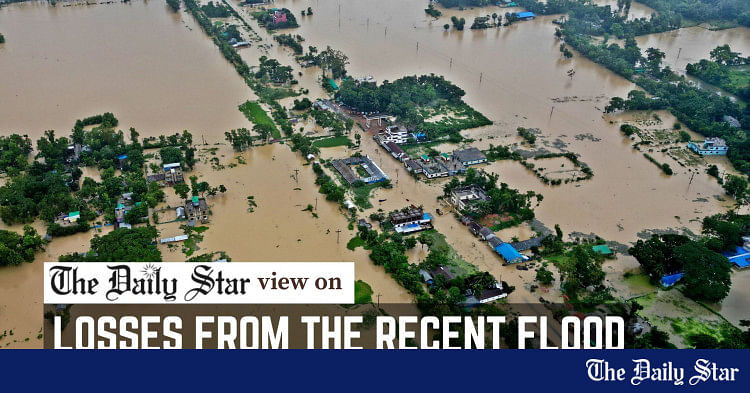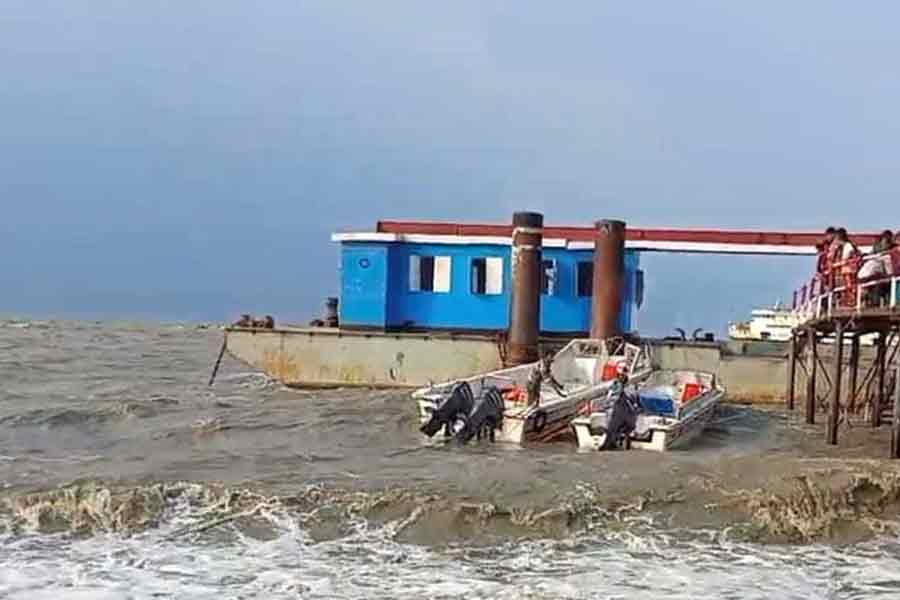Saif
Senior Member
- Joined
- Jan 24, 2024
- Messages
- 15,416
- Nation

- Axis Group


Over 34,000 affected by floods in Feni, many start leaving shelters
More than 34,600 people have been affected by flooding across five Upazilas in Feni, according to local administration. As water levels begin to recede in some areas, many displaced residents return home from shelters. By Friday evening, floods had hit five of the district’s six upazilas.
Over 34,000 affected by floods in Feni, many start leaving shelters
bdnews24.com
Published :
Jul 11, 2025 23:10
Updated :
Jul 11, 2025 23:10

More than 34,600 people have been affected by flooding across five Upazilas in Feni, according to local administration.
As water levels begin to recede in some areas, many displaced residents return home from shelters.
By Friday evening, floods had hit five of the district’s six upazilas.
Local authorities and residents said floodwaters are still flowing over the main roads connecting three Upazilas. As the water continues to flow over the roads, small vehicle movement on the Feni-Parshuram road has remained suspended for the fourth consecutive day.
Although floodwaters have begun receding in parts of Parshuram, large parts of Fulgazi remain waterlogged, with many residents stranded in waist-deep water.
The district and Upazila administrations have been distributing food at the shelters, though some residents have reported not receiving any aid.
Nur Nabi, a Fulgazi resident who runs a tea stall, said he recently upgraded his tin-shed house with a loan from an NGO. The house collapsed in the flood, and his belongings were destroyed.
Jahanara Begum, a woman in her 60s, said the floodwaters from a collapsed embankment submerged her home. She and her elderly husband spent Friday afternoon salvaging what they could.
In Fulgazi, 62-year-old Nurul Alam drowned while fishing in the floodwaters.
His body was recovered on Thursday night and buried on Friday. His family said he had set out fishing nets and drowned while attempting to retrieve them.
Additional Deputy Commissioner Ismail Hossain said flooding has affected 112 villages across five upazilas: 67 in Fulgazi, 27 in Parshuram, 15 in Chhagalnaiya, two in Daganbhuiyan, and one in Sadar.
In the five Upazilas, 34,600 people have been affected by the flood. Among them, 8,966 people from 2,625 families have taken shelter in relief centres, along with 648 livestock.
Feni Deputy Commissioner Saiful Islam said the government has allocated Tk 2.35 million to aid the flood victims.
He assured that Upazila chief executives and local administration are actively working on flood response, and the situation is gradually improving.
bdnews24.com
Published :
Jul 11, 2025 23:10
Updated :
Jul 11, 2025 23:10
More than 34,600 people have been affected by flooding across five Upazilas in Feni, according to local administration.
As water levels begin to recede in some areas, many displaced residents return home from shelters.
By Friday evening, floods had hit five of the district’s six upazilas.
Local authorities and residents said floodwaters are still flowing over the main roads connecting three Upazilas. As the water continues to flow over the roads, small vehicle movement on the Feni-Parshuram road has remained suspended for the fourth consecutive day.
Although floodwaters have begun receding in parts of Parshuram, large parts of Fulgazi remain waterlogged, with many residents stranded in waist-deep water.
The district and Upazila administrations have been distributing food at the shelters, though some residents have reported not receiving any aid.
Nur Nabi, a Fulgazi resident who runs a tea stall, said he recently upgraded his tin-shed house with a loan from an NGO. The house collapsed in the flood, and his belongings were destroyed.
Jahanara Begum, a woman in her 60s, said the floodwaters from a collapsed embankment submerged her home. She and her elderly husband spent Friday afternoon salvaging what they could.
In Fulgazi, 62-year-old Nurul Alam drowned while fishing in the floodwaters.
His body was recovered on Thursday night and buried on Friday. His family said he had set out fishing nets and drowned while attempting to retrieve them.
Additional Deputy Commissioner Ismail Hossain said flooding has affected 112 villages across five upazilas: 67 in Fulgazi, 27 in Parshuram, 15 in Chhagalnaiya, two in Daganbhuiyan, and one in Sadar.
In the five Upazilas, 34,600 people have been affected by the flood. Among them, 8,966 people from 2,625 families have taken shelter in relief centres, along with 648 livestock.
Feni Deputy Commissioner Saiful Islam said the government has allocated Tk 2.35 million to aid the flood victims.
He assured that Upazila chief executives and local administration are actively working on flood response, and the situation is gradually improving.







































